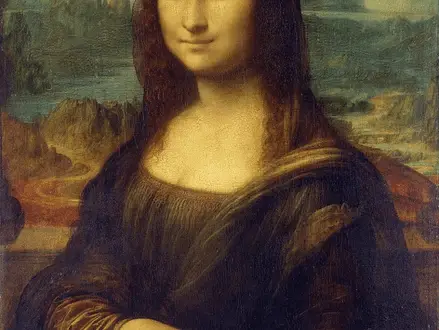The Mona Lisa

Why is the Mona Lisa Painting so Famous?
This is a frequently asked question. The Mona Lisa by Leonardo da Vinci appears to be just another woman’s image at first glance. A brown-eyed woman with dark hair, a wide forehead, and a round chin appears in the painting, which was painted between 1503 and 1519. Her hands are resting on the arm of a chair while she sits. Behind her is a diverse natural backdrop of highways, rivers, forests, and hills.
Despite this, the masterpiece changed portraiture forever.
Let’s find out why?
There’s the woman’s position, which invites a previously unseen contact with the work’s observer. Her upper torso is angled to face the viewer, giving her an otherwise immobile figure movement.
There’s also a stunning and varied environment in the background, which is a technique that hasn’t been employed much before.
When people are asked what makes the Mona Lisa stand out, they frequently note the figure’s enigmatic stare and perplexing smile.
Her smile is small and uninspiring, evoking no special sensation. But what distinguishes the Mona Lisa from other female portraits drawn by da Vinci throughout the course of the work?
Art & Science?
The growth of the Mona Lisa helps to explain why the artwork is so beautiful. Da Vinci wasn’t only a painter; he was also interested in engineering and scientific research. He spent time in Milan and Rome after finishing the painting, studying anatomy and serving as an architectural counsellor, before finally leaving Italy in 1516.
He relocated to rural France and, for the most part, abandoned the painting. He spent his time instead with King Francis I, sketching landscapes and celebrations for the royal family. The Mona Lisa was given to the French crown after Leonardo da Vinci died suddenly after a stroke in 1519. For generations, it was kept out of the public view and in the hands of the royal family.
When the French Revolution’s leader, Napoléon Bonaparte, came to power, he became interested in the project. In 1804 he had the portrait placed in the Louvre, where it remains to this day.
Despite its public debut, the Mona Lisa received little notice or admiration at the time. Michaelangelo’s and Raphael’s masterpieces, for example, were significantly more well-known.
Mona Lisa, STOLEN?
After it vanished in 1911, the picture became a symbol of mystery and drama. According to Smithsonian Magazine, a gang of young Italian males led by a former museum staffer slipped into the institution and walked out with the piece on a Sunday afternoon. It wasn’t until a museum visitor noticed the vacant area on the wall where the picture should have hung that the Louvre realised what had happened.
The robbery made global headlines. Visitors went to the museum to see the work’s former home on the wall. The burglar, Vincenzo Perugia, attempted to sell the painting to a Florentine art dealer in 1913, igniting a large international search. It is without a doubt the world’s most famous work of art.
So What Makes the Mona Lisa so Famous?
Let’s explore 4 interesting facts about the painting itself which help to make the Mona Lisa so well known.
Her Enigmatic Smile
She has a very enigmatic smile, created by Da Vinci using his SFUMATO method, which scholars and historians believe was done by layering over forty layers of extremely thin paint.
Technique
Rather than painting employing outlines to define the base illustration of the topic, Da Vinci devised a technique known as – SFUMATO – in which he used varied tones, colours, and hues to establish the general limits of the piece. It is one of the most difficult problems a painter can face, but if the method goes well, it may provide a great deal of delight.
Robbery
The heist made news across the world when the painting went missing in 1911, and visitors hurried to the museum to view the empty wall where the picture had once hung.
Her Eyebrows
The lack of eyebrows has sparked numerous discussions and theories, with some claiming it was a fashion statement of the time, while others claiming it was an unfinished job. Another theory proposes that the eyebrows were present at the time of the incident, but vanished over time.
You can also read all about Leonardo da Vinci by clicking here.
Information Citations
En.wikipedia.org, https://en.wikipedia.org/.
























